Two Toxic Fats in Almost Every Processed Food, Deli and Restaurant You Want To Avoid At All Costs: Soybean Oil and Canola Oil
By Nora Gedgaudas, CNS, NTP, BCHN
I consider both of these forms of oil to be trash oils that no one in their right mind should be consuming under any circumstances. Ever.
Why, you ask?
The reasons are multifold:
- All commercial canola and soybean oils, are partially hydrogenated/interesterified as part of their deodorization process.[1]
- The extraction of oil from soybeans is commonly achieved using toxic hexane solvents, typically also at high heat.[2] [3]
- Both these oils are lacking in any meaningful, quality essential fatty acid content, particularly since their plant-based omega-3’s (poorly utilized by humans anyway[4]) are typically hydrogenated out of the product, or become quickly rancid following extraction.
- Even if it is “organic and expeller pressed” the canola seed is naturally abnormally low in vitamin E as compared to other seeds for some unknown reason. Vitamin E is needed and usually naturally present to help stabilize and preserve the delicate polyunsaturated oils contained within seeds. This unusually low E level in canola seeds both makes canola oil more prone to rancidity but also can both deplete and increase one’s internal need for vitamin E and lead to deficiencies of this important vitamin and enhanced free-radical damage and inflammation.[5]
- Canola oil on its own is toxic enough that it can even be used as an effective pesticide[6], with all the accompanying cautionary warning labels (except on the stuff they expect you to consume).[7] Soybean oil, too has shown effectiveness as an insecticide and repellant.[8]
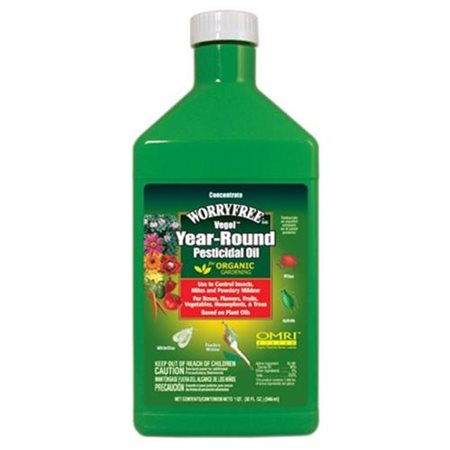
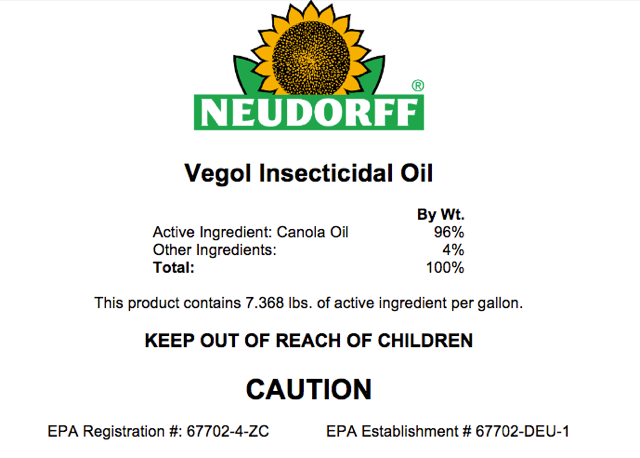
The labels on these products go on to explain “CAUTION: Avoid contact with skin or clothing. If you get it on yourself, you are directed to take off all your contaminated clothing, take a 15-20 minute shower to rinse the canola or soybean oil off your skin, and then “Call a poison control center or doctor for treatment advice.”
But hey—it’s great in egg salad!
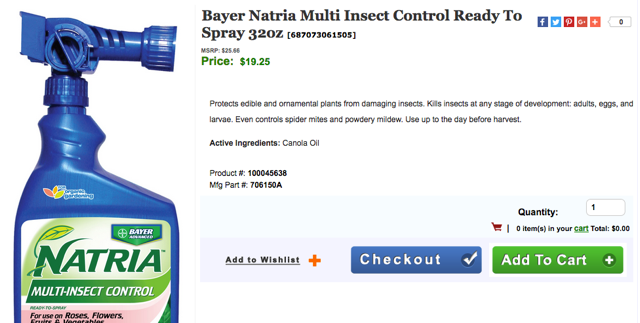
And let’s not forget the healthy benefits of soybean oil:
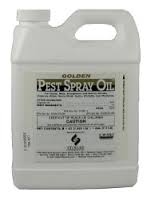
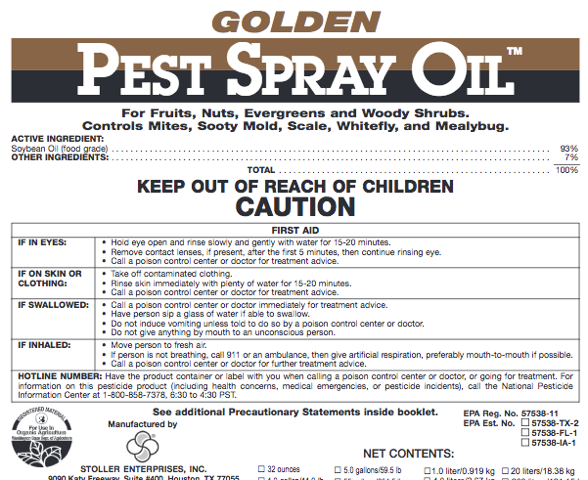
- Canola oil (for these and so many other reasons) should absolutely never be used for cooking. It simply lacks the stability and safe smoking point –particularly the non-hydrogenated form (you’re sort of screwed either way). The higher ALA (alpha linolenic acid) content (coupled with inherently depressed vitamin E levels) of organic, expeller pressed canola oil cause it to readily rancidify when exposed to air or (God forbid) heat.
- Canola and other highly refined soybean vegetable oils are highly inflammatory, due to their high omega-6 content (and proneness to rancidity). Inflammation, as you know, is at the root of most disease processes. –That canola also contains more oleic acid than, say, sunflower oil does not mean it is anywhere near as high in oleic acid as olive oil, nor does it negate the presence of highly significant rancidity-prone polyunsaturate content.
- The rape seed, from which canola was bred contained high levels of a fatty acid known as erucic acid which was originally believed to be the source of heart lesions found in rats fed rapeseed oil.[9] In canola oil most of the erucic acid has been bred out, which scientists initially assumed would simply fix the problem. Unfortunately, subsequent studies done with canola feeding experiments showed the same damaging results in experimental animals. This may well be due to the depleting effects (some scientists believe) of canola on vitamin E and the damage sustained by exposure to rancid, mutagenic fats and a high level of inflammatory omega-6’s.
- Canola and soy are among the most prevalent genetically modified crops (GMO) there is (canola was actually the very first genetically modified seed oil).
- There are other, more traditionally used plant-based oils (like coconut oil, quality extra virgin olive oil, or avocado oil) that have a long and comparatively safe track record. As such there is literally no reason to ever consume canola oil. That said, it is SO dirt cheap to produce that it is more economical to food manufacturers and deli owners. This is why you see it everywhere. What it says to me loud and clear when I find it being used is that a food manufacturer or restaurant/deli owner is more concerned with their bottom line than with the health of anyone consuming their product. Its somewhat significant oleic acid content prompts industry to present canola as a “heart healthy alternative to olive oil” (even as it is extremely high in inflammatory omega-6’s and has shown evidence of increasing proneness to stroke).[10] [11] It is no such thing. Ever.
A Sad Word of Caution About Olive Oil…
Despite the inherent superiority of extra virgin olive oil as a culinary oil, however, it is a sad truth and an important caveat that olive oil is among the most commonly adulterated foods. Even supposedly “extra virgin” olive oil is often diluted with other less expensive oils, including soybean and canola. The University of California, Davis, conducted its own investigation back in 2010 revealing that 69 percent of imported and 10 percent of California-based olive oils are fake, failing to pass International Olive Council and Department of Agriculture guidelines for extra-virgin olive oil.[12] There are certainly class action suits underway for some of these crooked manufacturers[13], but unfortunately the marketplace is still overrun with these “fake” and frequently rancid olive oil products.
In order for an olive oil to truly be “extra virgin,” it must come from fresh, crushed olives, and not be cut with any other oils or additives. It also has to pass certain chemical tests, including sensory evaluations, taste profiles and smell. Of the five best selling imported extra virgin olive oils (Bertolli, Colavita, Filippo Berio, Star and Pompeian), 73 percent failed to meet the IOC sensory standards for extra virgin olive oils. The failure rate ranged from 94 percent to 54 percent, depending on the brand and panel. Eleven percent of the top-selling Italian brands failed both testing panels. Sensory defects indicate that the oil is either oxidized, of poor quality, or that the oil has been mixed with a cheaper, refined oil. Ugh. Yep—it’s one greasy business and consumers would do well to be extra cautious when choosing any cooking oil. By the way, Dr. Mary Enig personally cautioned me against one particular brand of cooking oils: Spectrum Naturals, due to what she said were frequent signs of adulteration across the board in her lab testing.
For quality extra virgin olive oil (the REAL stuff) I personally like Oliflix and Bariani brands. But never cook with any olive oil (except maybe on the lowest heat settings). Its smoking point is simply too low to avoid rapid peroxidization. It is far better and safer to use olive oil on your salads or poured over freshly steamed vegetables, instead. For cooking stick to quality animal fats (I love the Fatworks® brand) and/or coconut oil.
THE MORAL OF THIS STORY? It’s not nice to fool Mother Nature! Avoid highly processed fats and oils like the plague they are—particularly soybean and canola oil. Always avoid over heating your fats, never use them if rancid and stick to organic and high quality natural foods that would have been recognizable as food to our primitive ancestors!
~ Nora
Check out my latest program, Primal Restoration ®!
References:
[1] Enig MG, “Trans Fatty Acids in the Food Supply: A Comprehensive Report Covering 60 Years of Research,” 2nd Edition, Enig Associates, Inc., Silver Spring, MD, 1995.
[2] Eldridge AC. “Organic solvent treatment of soybeans and soybean fractions.” In Soybeans: Chemistry and Technology, Volume I, Proteins. Allan K. Smith and Sidney J. Circle, eds. Avi. (1972) 150
[3] Sipos, Andre, Szuhaj, Bernard F. Chapter 11, Soybean Oil. In YH Hui, ed. Bailey’s Industrial Oil and Fat Products, (NY Wiley-Interscience, Fifth Edition, 1995) Volume 2, 527-528.
[4] Gerster H. “Can adults adequately convert alpha-linolenic acid (18:3n-3) to eicosapentaenoic acid (20:5n-3) and docosahexaenoic acid (22:6n-3)?” International Journal of Vitamin and Nutrition Research 1998;68(3):159-73.
[5] Sauer FD, et al. “Additional vitamin E required in milk replacer diets that contain canola oil.” Nutrition Research. 1997;17(2):259-269
[6] http://www.rakuten.com/prod/lilly-miller-32-oz-worry-free-vegol-year-round-pesticidal-oil/227417731.html
[7] http://www.neudorffpro.com/fileadmin/user_upload/Labels/Vegol-19-11-12.pdf
[8] NSRL Bulletin, 2, 295. National Soybean Research Laboratory. University of Illinois, at Urbana-Champaign. www.nsrl.uluc.edu.
[9] Vles RO, et al. “Nutritional Evaluation of Low-Erucic-Acid Rapeseed Oils: Toxicological Aspects of Food Safety.” Archives of Toxicology, Supplement 1, 1978:23-32
[10] Ratnayake WMN, et al. “Influence of Sources of Dietary Oils on the Life Span of Stroke-Prone Spontaneously Hypertensive Rats.” Lipids, 2000;35(4):409-420.
[11] Wallsundera MN. “Vegetable Oils High in Phytosterols Make Erythrocytes Less Deformable and Shorten the Life Span of Stroke-Prone Spontaneously Hypertensive Rats.” Journal of the American Society for Nutritional Sciences. May, 2000;130(5):1166-78
[12] http://olivecenter.ucdavis.edu/research/files/report041211finalreduced.pdf
[13] http://topclassactions.com/lawsuit-settlements/lawsuit-news/47263-bertolli-olive-oil-class-action-lawsuit-escapes-dismissal/
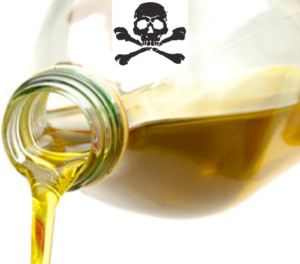



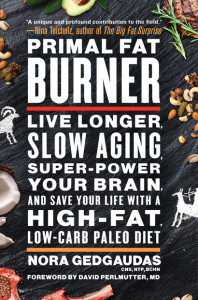
I am alergic to Canola oil. It causes Restless Leg Syndrome for me. I heard that some people were diagnosed with MS and when they stopped using Canola Oil, their symptoms literally vanished. No MS!! Yikes!
Autoimmune triggers can differ widely but the most common are gluten and dairy. That said, canola oil sensitively in and of itself is possible but I think the more likely culprits in the cases you are mentioning are #1 The GMO nature of nearly all Canola oil/Glyphosate residue, #2 The presence of trans fats in most canola, #3 A high percentage of Omega 6-fats in canola oil which is highly inflammatory. ~ Nora
What do you have to share about cooking with lard? I have been glad to have the return of animal fats to the table. Butter from grass fed cows, egg yolk, cheese, and real cream for example, are now considered to be good for you. I
would like to hear what you think about lard as a cooking fat.
I am not actually among those overly embracing dairy fats back into the fold. There are many reasons to be cautious about them, not the least of which involves their high potential for antigenicity and cross-reactivity with gluten. Most of the studies cited in the China study, for instance, that were supposed to convince us that animal protein was bad for us were based on dairy sources (casein, mainly) in animal studies. Dairy fats are also especially bad for those having APO-E4 genotypes. I explain more about all this in my most recent book (Primal Fat Burner). Eggs (including whites and yolks) are also a pretty common food sensitivity nowadays (probably in part because they are so over-consumed) and I recommend a certain amount caution in those where inflammatory conditions persist following the adoption of this way of eating…though a few of my recipes do include eggs for those that tolerate them well.
As for lard, I consider it a fine cooking fat, just as long as it is fully pastured, organic, non-hydrogenated and not used with overly high heat (nothing over medium heat). Fully pastured pork is actually potentially the richest natural source of vitamin D3 in our diets.
What does “fully pastured pork” mean?
Our family have embraced animal fat, grass fed butter, locally produced evoo and extra virgin coconut oil in the last 3 years and eating the primal way. I rarely eat out but have noticed that when we do eat out and when I eat foods that are fried (and it is not often) I get a feeling of numbness and tingling on the perimeter of my tongue and on my lips. I have concluded this to be because they are using canola oil or cottonseed oil (another fat that restaurants are touting to make them appear that are health conscious) and this is my litmus test to not go to that restaurant again.
Are you aware of this sort of physical reaction to ‘bad’ oils?
nora, i’m reading bits & pieces of your latest work everyday & i wanted to thank you for your superhuman effort & skills in presenting this fresh, accurate, thoughtful analysis into how we could thrive again if we’d only eat what we were meant to. as a student in a health coaching program, i’m trying to fold your wisdom & knowledge into the mantra “no one diet fits all…” it’s a tough reconcilation, but the history & logic’s on your side. keep up the good fight.
adam
Alicia: It means that the animal was allowed to walk around and forage in fresh air and sunshine. (i.e. not confined) The pig absorbs sunlight (like we do) and for which they make Vitamin D. When humans eat the pastured pork we get the active Vitamin D3 that we can use. Pig fat is the richest dietary source of Vitamin D (but only if allowed to live out in sunshine).
Thanks Adam for making my day. I’m passionate about this stuff!
June: I haven’t heard of that happening but I’d be suspicious of pesticide residues.
Are wild or feral hogs what you would consider to be equivalent to pastured pork?
Thank you for educating me about lard. I am so blessed to have this web site as a resource. Thank you for being on line with this knowledge.
Alicia,
Pastured pork are raised with free access to open fields (they usually still have a barn for protection) and not in a huge concentrated animal feeding operation (CAFO). There is a good video here on Joel Salatin’s pastured pig talk https://www.youtube.com/watch?v=gevYi6xCh4w. Same thing applies to chickens. http://www.bigpicturehealth.com/which-came-first/
Absolutely Jimmy!
Great report. Very well organized. Thank you.
What do you think about high oleic sunflower oil?
We recently tried cooking with a new product, Sunvella – comes refined for high heat and unrefined for medium heat.
We liked it a lot.
Dear Saul–thank you for your kind words. I’m glad you like the article!
High oleic sunflower oil (refied or unrefined) really isn’t any more heat-damage resistant (and maybe even less) than olive oil. I don’t consider any vegetable oil to be particularly optimal for cooking. Coconut oil is the one plant-based oil that you can feel much more comfortable with. If you really like your high oleic sunflower oil (which is also likely to be high in more inflammatory omega-6’s, by the way) then just use it in salad dressings, or poured over food after it has been cooked, if you like. I would never use anything like olive oil or avocado oil on anything over low heat. These become oxidized fairly quickly at temperatures ranging any higher than that. When it comes to higher heat cooking trying to stick with animal fats wherever possible. I hope this helps!
Nora,
I’d like your opinion on a practice in the book, “Tender Grassfed Meat, Traditional Ways to Cook Healthy Meat”, by Stanley A. Fishman. He has, what seem to be, wonderful recipes for cooking meats, but all of them are marinated, as a first step, in Extra Virgin Olive Oil, unfiltered and Organic. (Bragg?) Usually they are marinated in 1-2 Tablespoons of the oil, left out for 1 hour, and then refrigerated overnight, and cooked the next day (after leaving it out for an hour for the met to reach room temperature.) He says that using this unfiltered oil, tenderizes the meat. He also says that this oil has no advantage over filtered oil when used for frying or sauteing, as heat destroys the enzymes. So, using it to tenderize meat, and then cooking the meat will not destroy enzymes, since they’ve been absorbed into the meat?
He acknowledges the founder of the Weston A. Price Foundation, Sally Fallon and Dr. Mary Enig for teaching him the truth about food and nutrition, and for fulfilling Dr. Weston A. Price’s last wish, “You teach, you teach, you teach!”. You’ve cautioned in your blog regarding what fats to avoid at all costs, to never cook with any olive oil because of its low smoke point to avoid peroxidization. Would cooking meat which has been marinated in olive oil (the right kind…Oliflix or Bariani) and absorbed into the meat still be a no-no because any heat added to the cooking would ruin any oil left on the surface of the meat? And, what is your take on Bragg unfiltered, unrefined , organic Virgin Olive Oil?
(Thanks for reading through this very wordy question!)
I, too have used olive oil in my stake marinades, but I also cook my meat at below smoking point temperatures.
Isn’t cheap oil used as an insecticide because it suffocates the insects? Just sayin’. Love your work.